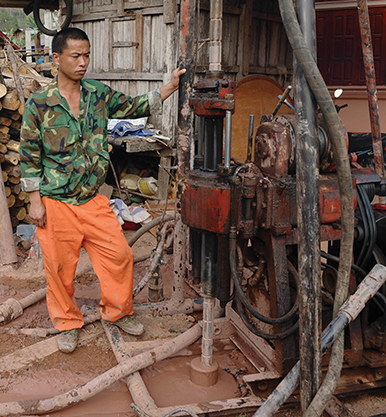Land-locked Laos hopes to achieve its long-term objective of being ‘land-linked’ by 2021 with the scheduled completion of a 414-kilometre medium-speed railway between Boten, on the Laos-China border, and Vientiane, the capital.
While the railway promises to establish Laos as a logistics link between its Asian neighbours, banks and international development agencies worry that the $6bn project, now subsumed under China’s Belt and Road Initiative, will add to Laos’s rising public debt without contributing much to the local economy. Public debt was 61.1% of gross domestic product ($17bn) in 2017 and is expected to hit 65% this year, according to International Monetary Fund estimates.
China in the wings
Laos is still ranked among the world’s least developed nations, but the small communist country of 6.8 million people is graduating out of the era of grant funding into concessional loans from organisations such as the Asian Development Bank and World Bank. It is also engaging in more borrowing from Chinese banks and has issued about $1.6bn-worth of sovereign bonds in neighbouring Thailand.
Tellingly, the Laos branch of the Industrial and Commercial Bank of China currently boasts the biggest balance sheet in the country, surpassing that of the state-owned Banque pour Le Commerce Exterieur (BECL), the largest domestic bank.
While the loan conditions of the Laos-China Railway are not onerous, they are a source of worry in both the short and long term. To finance the deal, the Laos government agreed a 30/70 joint venture called the Laos-China Railway Company, responsible for the $5.95bn investment. Both sides must invest an initial 40% of their financial commitment in cash – or $715m for the Laos side. Of this, $250m will come from the national budget over the next five years to compensate villages displaced by the project, while the remaining $465m will be borrowed from the Export-Import Bank of China at 2.3% interest with a 35-year maturity.
How to pay
Questions remain about how Laos will cover the remaining $1.1bn it is responsible for. Lao officials say the land used by the rail project, some of it for commercial development, will count as its contribution, but it is unclear whether it must guarantee earnings. “For me, the big question is what might the government be on the hook for,” says one international organisation’s mission head for Laos.
What is clear is that Laos needs to stump up $50m a year from its budget for the next five years. This is a considerable expenditure for Laos in light of its revenue constraints. “Fifty-million dollars is not a great amount, but the relevant point is that it is supposed to be paid in cash, so you would have to figure out how much additional revenue they would have to collect in order not to affect other items on the budget, such as health and education,” says the mission head, who preferred to remain anonymous.
Laos has launched a crackdown on corruption and is pushing through tax reform to boost revenues. But the bigger picture on revenue is not bright. Those from mining are on the decline, as the big copper and silver mines are expected to be exhausted in the next two to three years. Hydro-power revenues from exports, mainly to Thailand, are now the leading foreign currency generators. A dam collapse on July 23 in Attapeu province, which claimed an estimated 100 lives, prompted the government to halt new investments in hydro projects, raising questions about the sector’s long-term prospects.
Import worries
Worries are being raised that the Laos-China Railway will not be a money-spinner. “We thought there would be some spill-over [that would] keep things ticking along for a while, but at the moment we don’t see any impact on the local economy,” says Bounmy Sengphachan, deputy CEO of Banque Franco-Lao, a joint venture between France’s BRED Group and Laos’s BECL.
The project’s longerterm impact remains uncertain. “The railway will allow some sectors to reduce their logistics costs from China to Vientiane, but it will also mean more Chinese imports come in to the country, so how will you be able to develop your own manufacturing or industry in Laos?” adds Mr Sengphachan.












